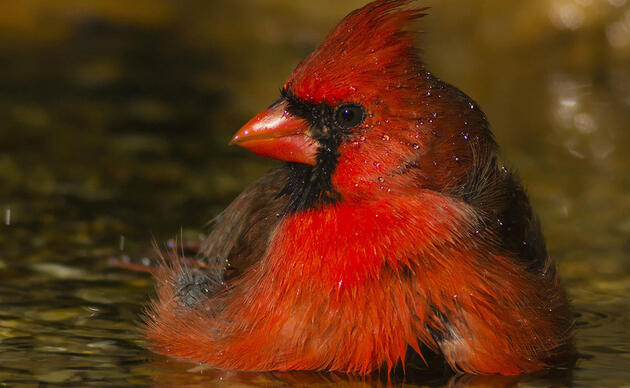Audubon and Pew: Florida’s Coastal Birds Could Face Threat to Food Supply
Already pressured by a steady loss of habitat, many of Florida's imperiled and iconic coastal waterbirds are vulnerable to declines in small fish that are necessary for their survival, according to a report by Audubon Florida and The Pew Charitable Trusts.
"Fins and Feathers: Why little fish are a big deal to Florida's coastal waterbirds" examines the crucial link between birds and the diverse array of small fish that are a critical food source. Declines in the populations of these fish, known alternatively as forage fish, prey fish or baitfish, could threaten imperiled birds such as Brown Pelicans, Roseate Spoonbills, Black Skimmers and Reddish Egrets, according to the report.
"In Florida, our environment is directly linked to our quality of life and our economy," said Julie Wraithmell, Audubon Florida's Director of Wildlife Conservation. "This report shows how important baitfish are to Florida's coastal birds, environment, communities and economy. Fisheries policy must consider the ecological and economic vitality that hinges on these smallest of fish."
Few regulations limit the amount of forage fish such as sardines and herring that are hauled out of Florida's coastal waters each year. Fishery managers can help conserve Florida's forage fish and its natural resources by accounting for the needs of predators such as seabirds when setting fishing rules in Florida's coastal waters. Bird conservation efforts historically have focused on other threats such as habitat loss, with less emphasis on ensuring prey abundance and availability. With many birds already pressured by a steady loss of habitat, this report reveals a new and critical conservation gap at a time when leaders can act before it's too late.
In light of the report's analysis, Audubon Florida and Pew encourage the state to:
- Account for the forage needs of coastal waterbirds before expanding current forage fisheries or allowing the development of new forage fisheries.
- Ensure sufficient abundance, variety, and sizes of forage fish species to meet the needs of coastal waterbirds and other marine wildlife when setting management limits on forage fisheries.
- Identify and map foraging areas for nesting coastal waterbirds and areas subject to forage fisheries; analyze potential overlap of these areas and activities; and consider conservation and management options to avoid or minimize potential conflicts.
- Protect forage fish habitat such as mangrove and seagrasses, as well as water quantity and quality in the estuaries.
Coastal development in Florida directly harms seagrass beds, mangrove forests and salt marshes, all of which serve as critical nursery habitat for forage fish. Similarly, changes in the quantity, quality and timing of freshwater that flows into estuaries threaten to degrade and diminish the quality of these important places for fish. At the same time, habitat loss and coastal development also pose risks to many of Florida's bird populations.
For additional information, including details on specific species, see the full report here: http://bit.ly/FinsandFeathers (16mb)
How you can help, right now
Donate to Audubon
Help secure the future for birds at risk from climate change, habitat loss and other threats. Your support will power our science, education, advocacy and on-the-ground conservation efforts.
Become a Monthly Donor
Donating monthly is flexible, easy and convenient and makes you a champion birds can count on, no matter the season.
Volunteers Needed
Florida's birds and wildlife need your time and energy. Learn how you can become a citizen scientist or a volunteer at one of our nature centers today.




